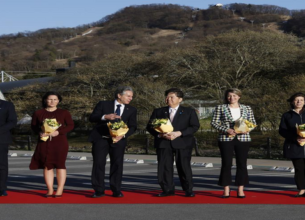Ladakh, a fragile region, needs autonomy
17, Feb 2023

Prelims level : Governance
Mains level : GS-II Governance - Government policies and interventions.
Why in News?
- Ladakh residents demanding special constitutional status.
Highlights:
- The residents of Ladakh would gather in Delhi (on 15th February 2023), as they agitate for a special constitutional status for Ladakh.
- A special constitutional status for the region would allow its residents to decide on a development approach that protects the fragile ecological and cultural heritage of Ladakh.
Recent developments in this direction:
- Sonam Wangchuk, a renowned educationist and inventor, began a fast in the open in sub-zero temperatures on 26 January 2023.
- On 31st January 2023, a large demonstration was held in lay with over 20000 people. Almost a fortnight before this demonstration, the Leh Apex Body and the Kargil Democratic Alliance (the two most powerful political and cultural organizations) rejected a committee established to examine the status issue.
- Moreover, student groups and civil society groups have ramped up their demand for constitutional safeguards.
Background details about Ladakh:
- Ladakh was an independent kingdom for almost 1000 years. It was later integrated into Jammu and Kashmir (J&K).
- It has a cold desert ecosystem that harbours rare mammals such as the wild yak and the snow leopard apart from diverse flora. The economy and society of the region are mainly dependent on high-altitude pastoralism, agriculture, and trade.
Associated concerns:
- The people of Ladakh always demanded the region’s status as a Union Territory (UT). However, after it was granted in 2019, it was soon realized that the real need for a relatively free and autonomous region with substantial local employment opportunities was a distant dream.
- The Union Government in 2019 announced that Ladakh would be granted a special constitutional status. Even the Sixth Schedule status was promised to the region.
- Due to the fragile ecosystem, the region cannot bear heavy human activity. Additionally, it is already reeling under the pressure of heavy infrastructure development, intense armed forces presence, and excessive tourism. For instance,
- There is an increasing commercial interest in tourism, mining, hydropower, and other natural resources in the region.
- Big corporations are raising their investments.
- A new airport is being constructed and roadways into the unexploited Zanskar region are also being ramped up.
- A large mega-solar power project is also proposed in the ecologically fragile region of Changthang.Such developments have increased the risks of landslides, erosion, wildlife disturbance, etc.
- According to a study by Kalpvriksh in 2019, it was found that despite having an Autonomous Hill Development Council (AHDC) since 1995, the decision-making is mainly dominated by Srinagar and Delhi.
Way Ahead:
- Ladakh and Delhi should work together. For instance, a Hill Council decision for organic agriculture in Ladakh can be supported by the centre by asking the armed forces to purchase locally grown and made items.
- Communities should be supported in their collective rights over grasslands through the Forest Rights Act. Tourism in the region should consider ecological sensitivity and should be majorly run by the community.
- Initiatives like livelihoods sensitive to Ladakh’s ecology, decentralized solar energy, and sustaining the food and agricultural heritage of the region should be supported.









